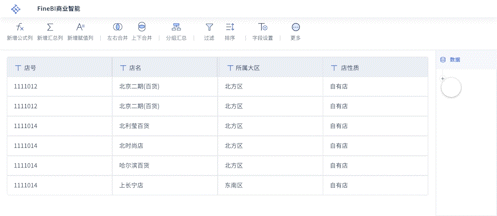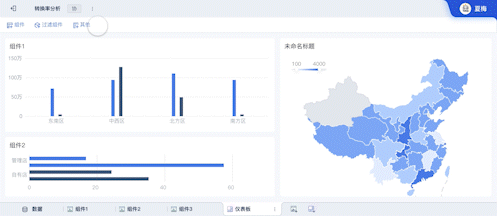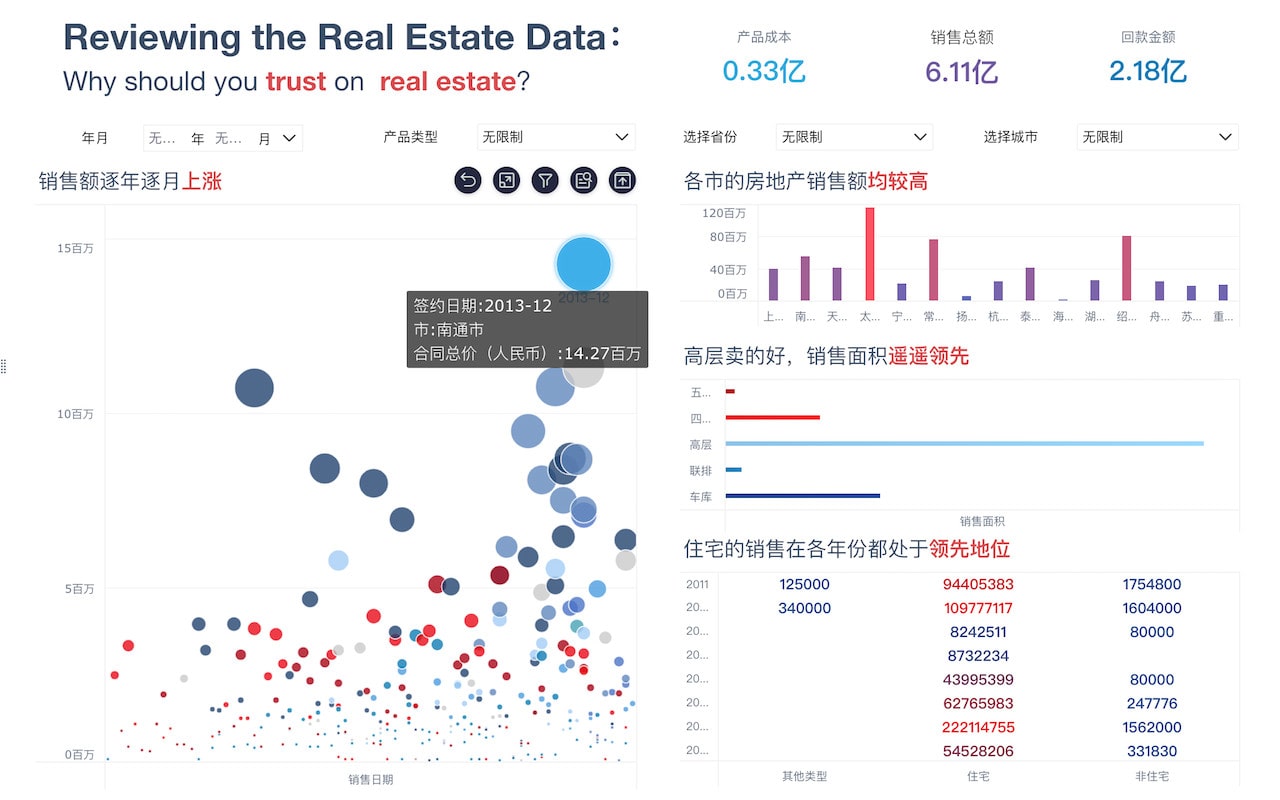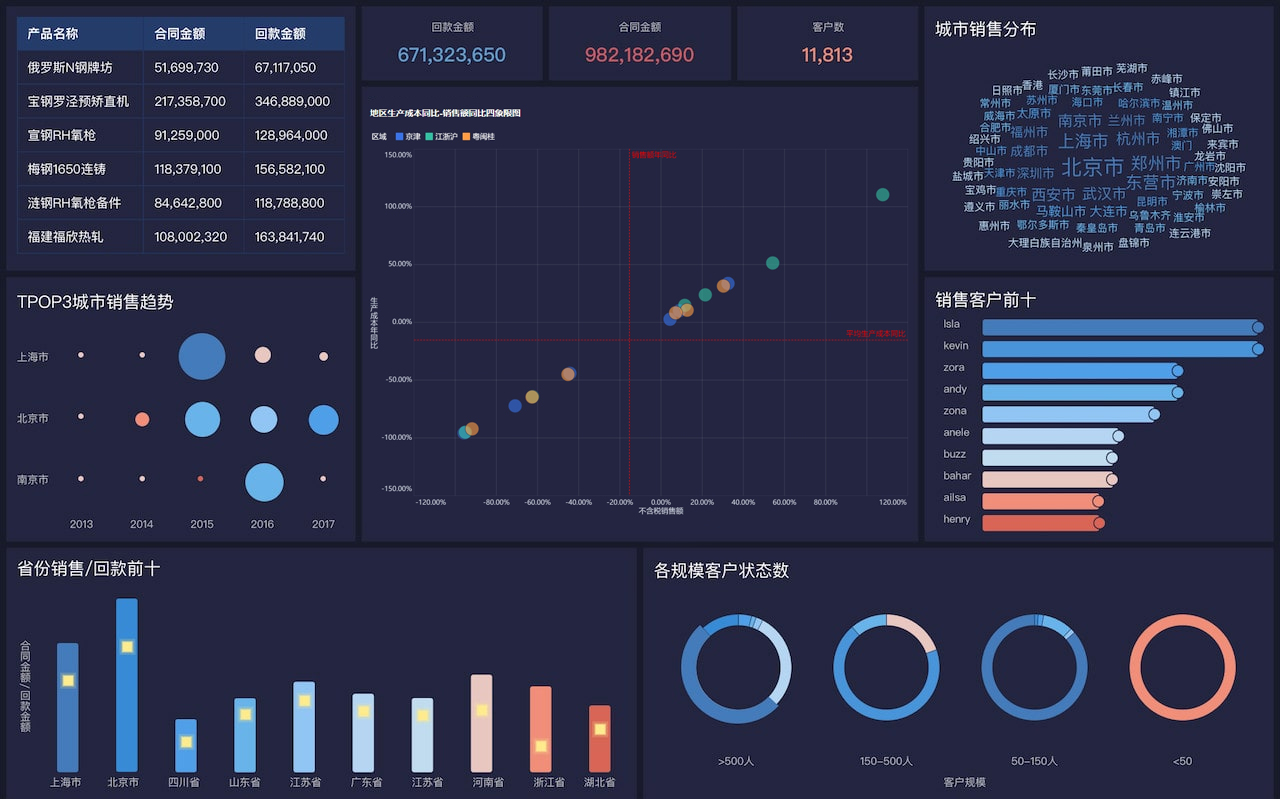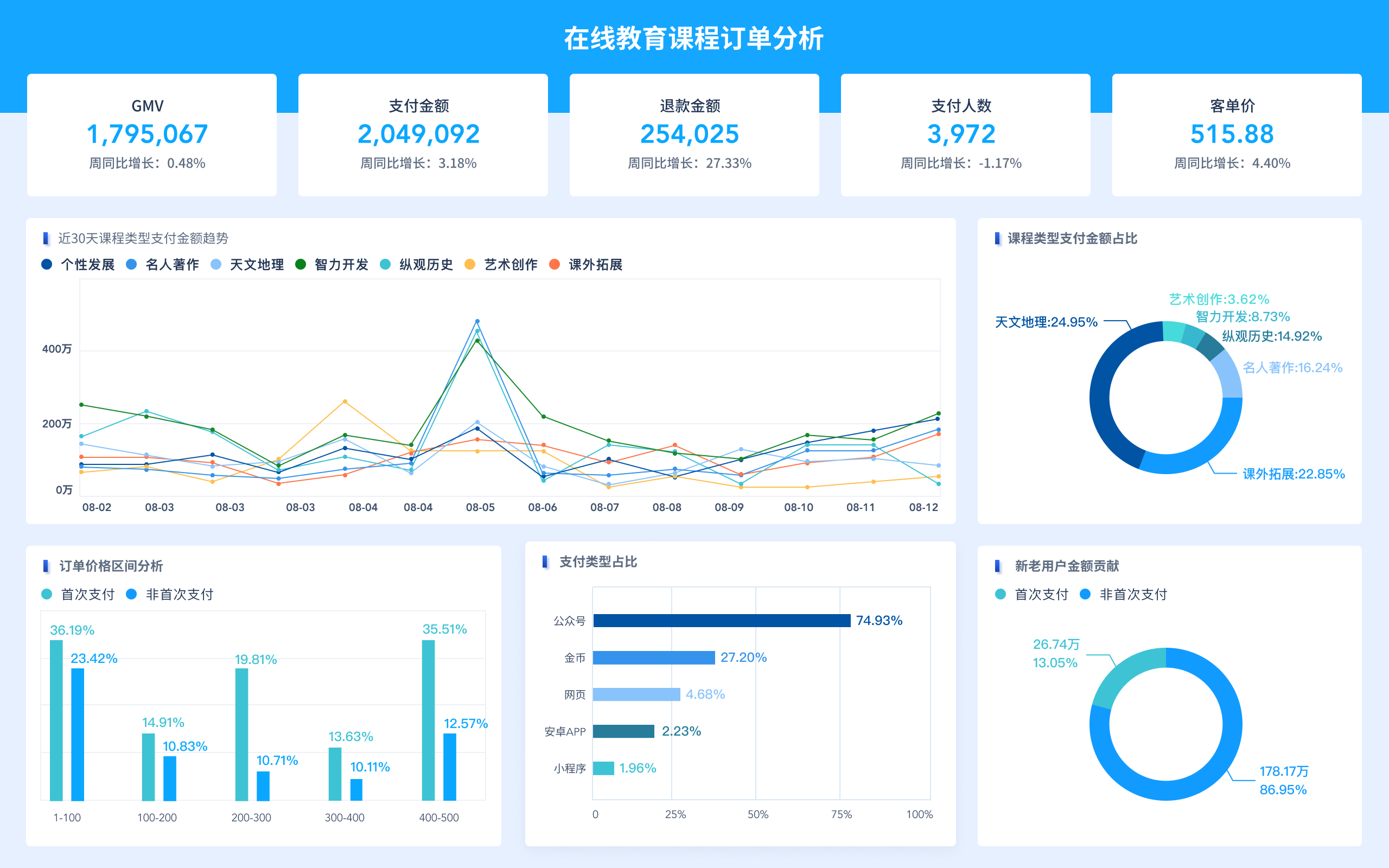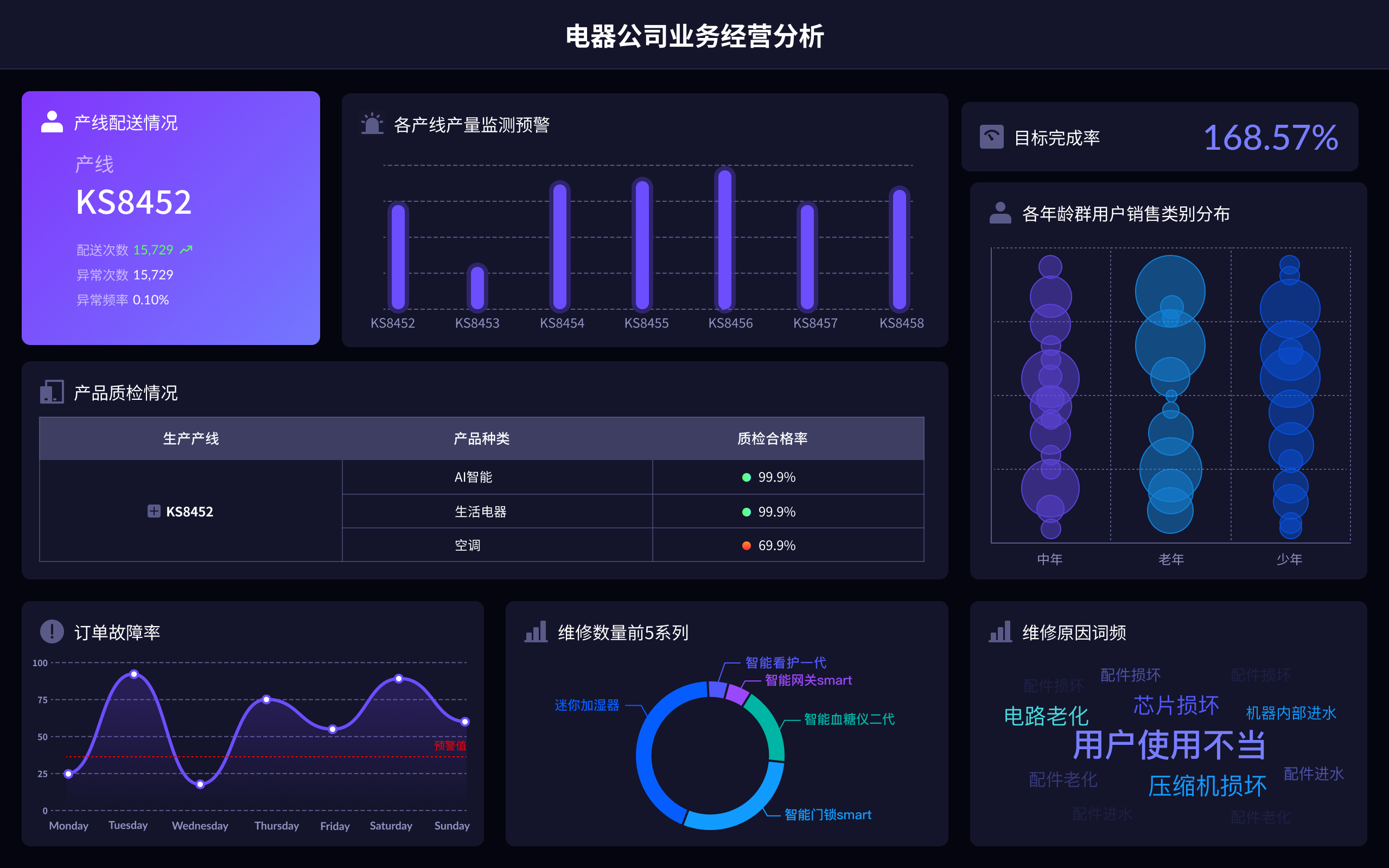
数据挖掘的英文代码是"data mining"、"data analysis"、"machine learning"、"predictive modeling"、"big data analytics"、"statistical analysis"。数据挖掘(data mining)是从大量数据中提取出有用信息和知识的过程。它结合了统计、人工智能和数据库技术,应用广泛。数据分析(data analysis)是数据挖掘中的关键部分,通过对数据进行筛选、转换和建模,以发现有意义的信息,从而支持决策。对于企业来说,数据分析能够提供关于市场趋势、客户行为和业务绩效的重要洞见。
一、DATA MINING
Data mining is the core process of extracting valuable information from large datasets. It encompasses various techniques and methodologies that allow organizations to identify patterns, correlations, and anomalies within their data. The primary goal of data mining is to convert raw data into meaningful insights that can drive strategic decisions. Techniques such as clustering, classification, and association rule mining are commonly employed in data mining processes. For example, clustering can help segment customers into different groups based on purchasing behavior, enabling targeted marketing campaigns. This not only improves customer satisfaction but also increases the efficiency of marketing efforts.
二、DATA ANALYSIS
Data analysis is a crucial aspect of data mining, involving the inspection, cleansing, transformation, and modeling of data. It aims to uncover useful information, draw conclusions, and support decision-making. Descriptive analysis, inferential analysis, and predictive analysis are some key types of data analysis. Descriptive analysis summarizes data and reveals patterns, while inferential analysis makes predictions about a population based on a sample. Predictive analysis uses historical data to forecast future trends. In business, predictive analysis is particularly valuable for anticipating market shifts and customer behavior, allowing companies to adapt proactively.
三、MACHINE LEARNING
Machine learning, a subset of artificial intelligence, plays a pivotal role in data mining. It involves training algorithms to recognize patterns and make decisions based on data. Supervised learning, unsupervised learning, and reinforcement learning are the main types of machine learning. Supervised learning involves training a model on labeled data, making it suitable for classification and regression tasks. Unsupervised learning, on the other hand, deals with unlabeled data and is often used for clustering and association. Reinforcement learning focuses on training models through rewards and penalties, making it ideal for dynamic environments like autonomous driving.
四、PREDICTIVE MODELING
Predictive modeling is a process that uses statistical techniques and machine learning algorithms to predict future outcomes based on historical data. Regression analysis, decision trees, and neural networks are commonly used techniques in predictive modeling. Regression analysis examines the relationship between dependent and independent variables, while decision trees create a model that maps observations to conclusions. Neural networks, inspired by the human brain, can model complex patterns and relationships in data. Predictive modeling is extensively used in finance for credit scoring, in healthcare for disease prediction, and in marketing for customer segmentation.
五、BIG DATA ANALYTICS
Big data analytics refers to the process of examining large and varied datasets to uncover hidden patterns, correlations, and other insights. Volume, velocity, variety, and veracity are the four key characteristics of big data. Volume refers to the vast amount of data generated, velocity to the speed at which data is processed, variety to the different types of data, and veracity to the trustworthiness of the data. Big data analytics leverages technologies like Hadoop and Spark to handle and analyze massive datasets. In retail, big data analytics helps in inventory management, personalized marketing, and improving customer experience.
六、STATISTICAL ANALYSIS
Statistical analysis is the foundation of data mining and involves collecting, analyzing, interpreting, and presenting data. Descriptive statistics, inferential statistics, and multivariate statistics are key components of statistical analysis. Descriptive statistics summarize data using measures like mean, median, and mode. Inferential statistics make predictions about a population based on a sample, using techniques like hypothesis testing and confidence intervals. Multivariate statistics analyze multiple variables simultaneously, using methods like factor analysis and cluster analysis. Statistical analysis is essential in fields like economics, biology, and social sciences for making data-driven decisions.
七、APPLICATIONS OF DATA MINING
Data mining has a wide range of applications across various industries. In finance, it is used for fraud detection and risk management. In healthcare, it helps in disease diagnosis and patient care. In retail, it aids in market basket analysis and customer segmentation. Data mining is also crucial in telecommunications for churn prediction and network optimization. In manufacturing, it helps in quality control and predictive maintenance. The ability to uncover hidden patterns and insights from data allows organizations to gain a competitive edge and improve operational efficiency.
八、TOOLS AND TECHNOLOGIES
Several tools and technologies are available for data mining, each with its own strengths and use cases. R, Python, SQL, Hadoop, and Spark are some of the most popular tools. R and Python are programming languages extensively used for statistical analysis and machine learning. SQL is essential for database management and querying. Hadoop is an open-source framework for distributed storage and processing of large datasets, while Spark is a fast and general-purpose cluster-computing system. These tools enable data scientists and analysts to process and analyze data efficiently, driving insights and decision-making.
九、CHALLENGES IN DATA MINING
Despite its potential, data mining faces several challenges. Data quality, data privacy, and the complexity of algorithms are significant hurdles. Ensuring data quality involves dealing with incomplete, noisy, and inconsistent data, which can affect the accuracy of analysis. Data privacy concerns arise due to the sensitive nature of the information being analyzed, necessitating robust security measures. The complexity of algorithms requires specialized knowledge and expertise to implement and interpret. Addressing these challenges is crucial for the successful application of data mining techniques.
十、FUTURE TRENDS
The future of data mining is promising, with advancements in technology and methodologies. Artificial intelligence, deep learning, and quantum computing are set to revolutionize the field. Artificial intelligence will enhance the ability to process and analyze large volumes of data. Deep learning, a subset of machine learning, will enable more accurate and complex pattern recognition. Quantum computing holds the potential to solve problems that are currently computationally infeasible. These advancements will expand the scope and capabilities of data mining, opening up new possibilities for innovation and discovery.
In conclusion, data mining is a powerful tool that enables organizations to extract valuable insights from large datasets. By leveraging techniques such as data analysis, machine learning, predictive modeling, and big data analytics, businesses can make informed decisions and gain a competitive edge. However, addressing challenges related to data quality, privacy, and algorithm complexity is essential for maximizing the benefits of data mining. With the continuous evolution of technology, the future of data mining holds immense potential for transforming various industries and driving innovation.
相关问答FAQs:
数据挖掘英文代码是什么?
数据挖掘的英文是“Data Mining”。在计算机科学和统计学领域,它指的是从大量数据中提取有用信息和知识的过程。数据挖掘技术广泛应用于各个行业,包括金融、市场营销、医疗和社交网络等。其主要目标是通过分析数据模式,帮助决策者做出更明智的选择。
在数据挖掘的过程中,通常会用到多种算法和技术,如分类、聚类、回归和关联规则等。编写这些算法的代码常用的编程语言包括Python、R、Java和SQL等。Python尤其受到欢迎,因为它有丰富的数据处理和分析库,如Pandas、NumPy、Scikit-learn和TensorFlow等。
数据挖掘的主要步骤有哪些?
数据挖掘的过程通常可以分为几个主要步骤,每个步骤都有其独特的重要性和技术应用。
-
数据收集:这一步骤涉及获取待分析的数据,数据可以来自数据库、数据仓库、网络爬虫或者是通过API接口收集。数据的质量和来源直接影响到后续分析的结果。
-
数据预处理:在进行数据挖掘之前,通常需要对原始数据进行清洗和转换。这包括处理缺失值、去除重复记录、标准化数据格式等。这一过程确保数据的准确性和一致性。
-
数据探索:通过可视化和描述性统计分析,对数据进行初步探索,以识别潜在的模式、趋势和关系。这一步骤有助于理解数据的结构,并为后续的模型选择和算法应用提供指导。
-
模型构建:根据数据的特点和业务需求,选择合适的算法进行建模。常见的模型包括决策树、随机森林、支持向量机、神经网络等。不同的模型适用于不同类型的数据和分析目标。
-
模型评估:通过交叉验证和性能指标(如准确率、召回率、F1-score等)来评估模型的有效性。这一过程有助于了解模型在新数据上的表现,并进行必要的调整和优化。
-
模型部署与监控:将经过验证的模型部署到实际应用中,并定期监控其性能,以确保模型在不断变化的数据环境中保持有效。这可以通过定期更新模型和重新训练来实现。
-
结果解释与可视化:最后一步是将数据挖掘的结果进行解释和可视化,以便决策者能够理解和利用这些信息。常用的可视化工具包括Matplotlib、Seaborn和Tableau等。
数据挖掘的应用场景有哪些?
数据挖掘的应用场景非常广泛,各行各业都可以通过数据挖掘技术来优化业务流程、提高决策效率和增强竞争力。
-
金融行业:银行和金融机构利用数据挖掘技术进行信用评分、风险管理和欺诈检测。通过分析客户的交易行为和信用历史,金融机构能够更好地评估客户的信用风险,从而做出更加明智的贷款决策。
-
市场营销:企业使用数据挖掘技术来分析消费者行为和市场趋势,以制定更加有效的营销策略。通过客户细分和推荐系统,企业能够提高客户满意度和忠诚度,从而增加销售额。
-
医疗健康:在医疗领域,数据挖掘被用来发现疾病模式、预测患者的健康风险以及优化治疗方案。通过分析患者的病历和治疗效果,医生可以为患者提供更加个性化的医疗服务。
-
社交网络:社交媒体平台通过数据挖掘技术分析用户行为,提供个性化内容推荐和广告投放。通过了解用户的兴趣和社交关系,平台能够提高用户的参与度和满意度。
-
制造业:在制造业,数据挖掘技术被用来优化生产流程、预测设备故障和进行质量控制。通过分析生产数据,企业能够实现更高的效率和更低的成本。
数据挖掘作为一种强大的工具,正在不断推动各个行业的创新与发展。通过深入理解数据的价值,企业和组织能够在激烈的市场竞争中立于不败之地。
本文内容通过AI工具匹配关键字智能整合而成,仅供参考,帆软不对内容的真实、准确或完整作任何形式的承诺。具体产品功能请以帆软官方帮助文档为准,或联系您的对接销售进行咨询。如有其他问题,您可以通过联系blog@fanruan.com进行反馈,帆软收到您的反馈后将及时答复和处理。




